Welsh father invents 3D printed hydraulic arm for his toddler to revolutionise NHS child prosthetics
Ben Ryan is seeking crowdfunding to develop affordable 3D printed prosthetics for early childhood.
A Welsh man has invented hydraulic 3D printed arm technology to improve prosthetics for infants and young children, as well as training their brains from birth to get used to wearing the devices.
Ben Ryan, 40, a former psychology lecturer from Anglesey, has developed prosthetics for children born with malformed arms or who had to undergo amputation. This will help them develop crucial motor functions, making it easier for them to cope with prosthetics in later life.
His son Sol, now almost two, lost most of his left arm when he was born with an undetected clot. Part of the arm had to be amputated, and Ryan and his girlfriend Kate Smith were told that no further medical help would be offered by the NHS until Sol was at least 12 months old.
Even at that age, options are limited. The NHS will provide a very small silicone hand on a fibreglass socket that is mostly based on technology invented by the Victorians. The child has to sit for a plasticast to be made of their body, and then wait several weeks for the plasticast to be made into a prosthetic.
The problem with existing prosthetics for kids
"To go from nothing to suddenly have to wear this rigid thing on your body is hit and miss. There's no guarantee the child will accept it at one-year-old. Even that passive arm has a function in a way. The research I've read suggests that function is the critical thing, from the point of the child, they need to use the arm to grab and interact with the world, not just for balance," Ryan, the founder of the startup Ambionics told IBTimes UK.
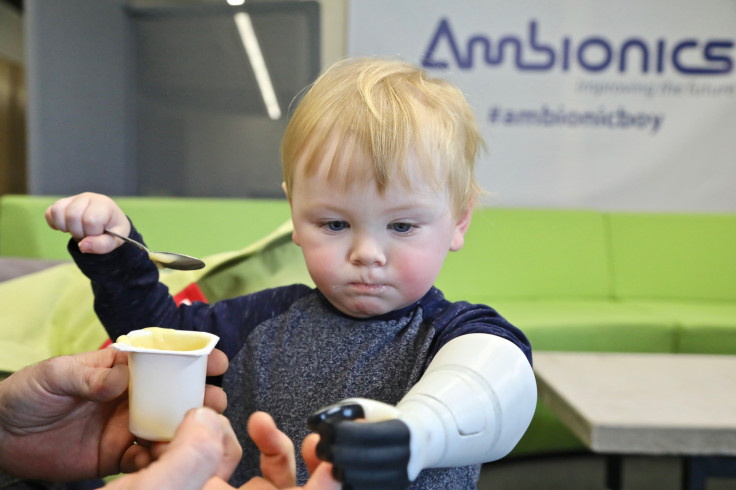
NHS doctors warn the parents of children who require prosthetics that the journey will not be easy. Once they have been fitted with the first, mostly cosmetic arm, and even when they receive a more functional prosthetic arm at the age of 3, most children don't want to wear it. Getting the child to wear the device for 15 minutes a day is a big achievement.
The problem with this is the fact that the first two and a half years of a child's life are crucial for strengthening neural pathways, and the brain starts to figure out which nerves are needed, and which nerves are not.
If the child is not prepared from birth to use the motor functions in what is left of their arm, they could lose it as they get older, especially if they are unwilling to wear and practice with a clunky, uncomfortable prosthetic. Parents could of course choose to get a prosthetic made privately, but it will set them back by about $5,000-$10,000 (£4,060-£8,120).
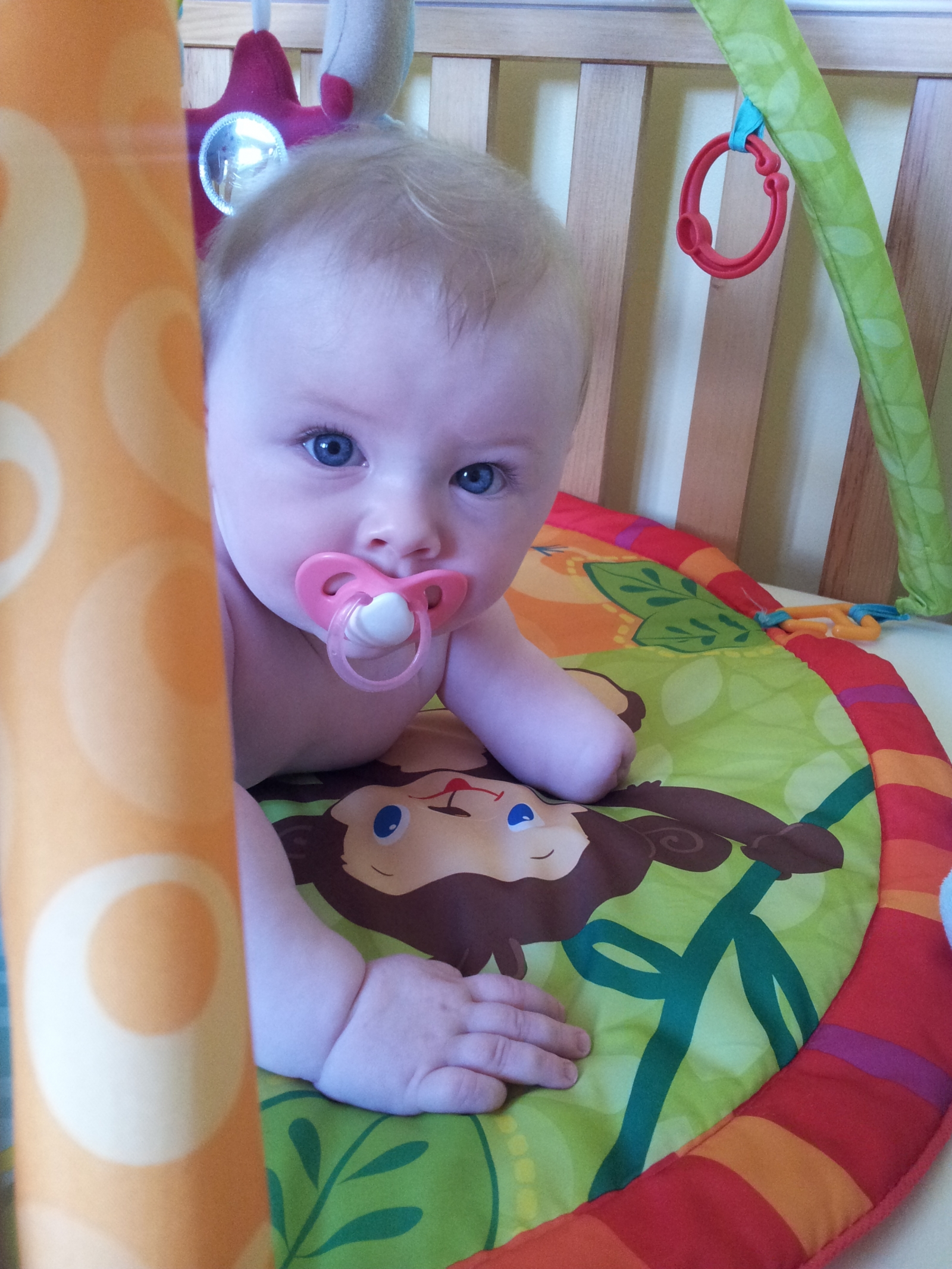

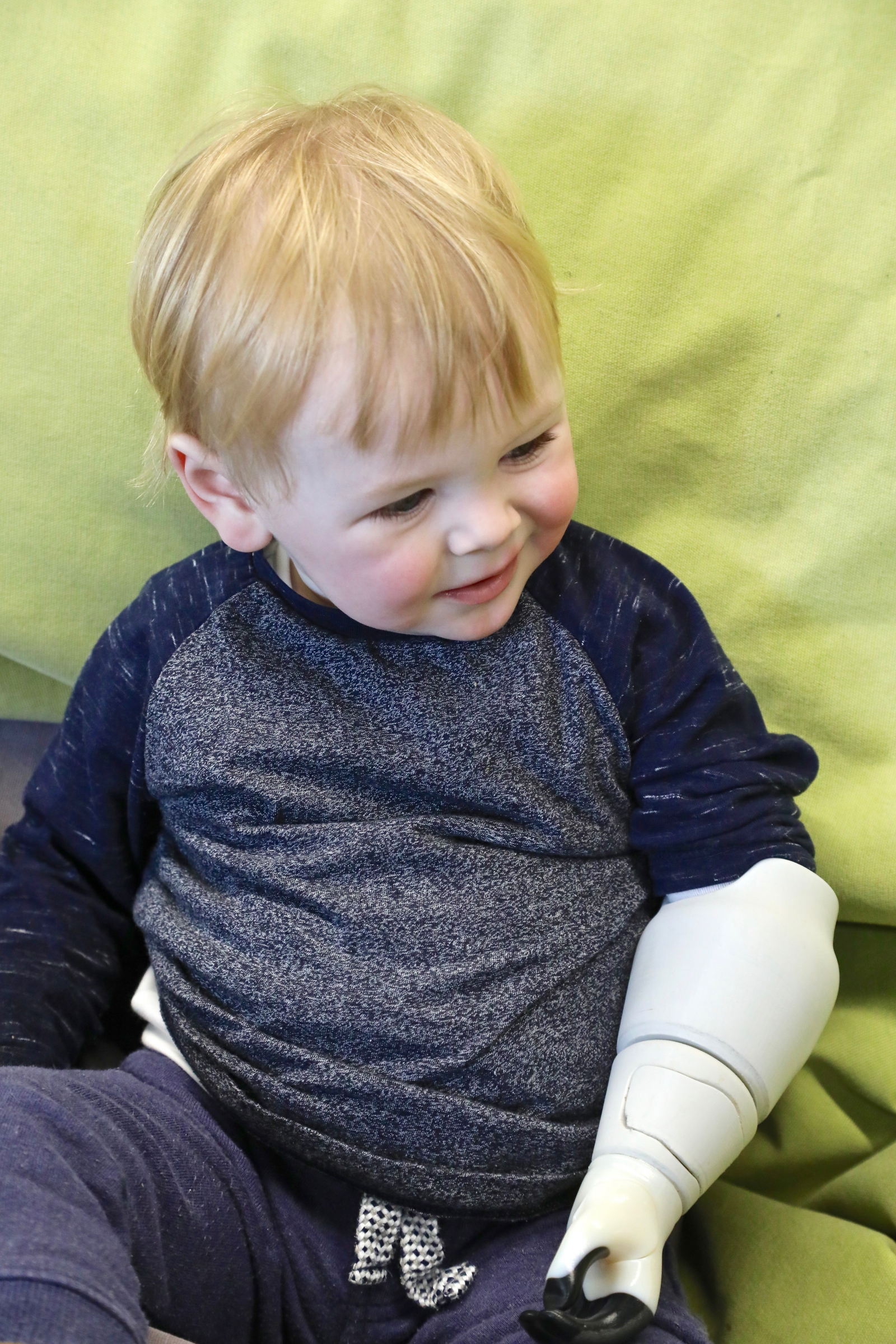
To solve this, Ryan created tiny foam arms for his child which he fitted onto Sol from the age of five weeks. The foam arms had Velcro so that Sol could grab onto soft toys. The foam arms worked so well that when the time came for Sol's appointment to have a plasticast made at the age of one, he was so used to holding his arm out that he didn't fidget at all. When the first prosthetic was fitted, he wore it for an entire day.
Typically, when the child reaches the age of three, the parent can choose from two options – either a myoelectrical battery-powered prosthetic where sensors read nerves through the skin and translate that into signals that can be processed by the device to make the hand work, or a body-powered hook.
The body-powered hook is a spring-activated hand connected via a cable from the shoulder to the opposite hip that requires the child to wear a full body harness. As the child extends the arm forward, the cable will tighten and open the hand.
The myoelectrical device is not safe to be used near water and it doesn't work well with infants as there are too many layers of fat, so it can't receive the signal from the skin. In older children, there is risk of muscles wasting away over time as the device doesn't make use of the biceps or triceps. The body-powered hook, although it works well to prepare children for later prosthetics, is clunky and children become self-conscious about wearing it as they get older.
The Ambionics Arm
So Ryan developed a new prosthetic which is suitable to be worn by children from the age of 10 months up to age 3. The hydraulic arm contains two 3D printed fluid-filled sacs in two chambers in the socket, known as the Double Acting Helical Bellow (DAHB). When the user presses on the sacs, they become displaced and bellows are used to operate a simple grabbing mechanism.
In addition to being part of the mechanism, the fluid-filled sacs also act as a cushion for the child's arm. The device is body-powered, but if you want more power for grabbing motion, you can use compressed air, a hydraulic pump and reservoir, or battery power.
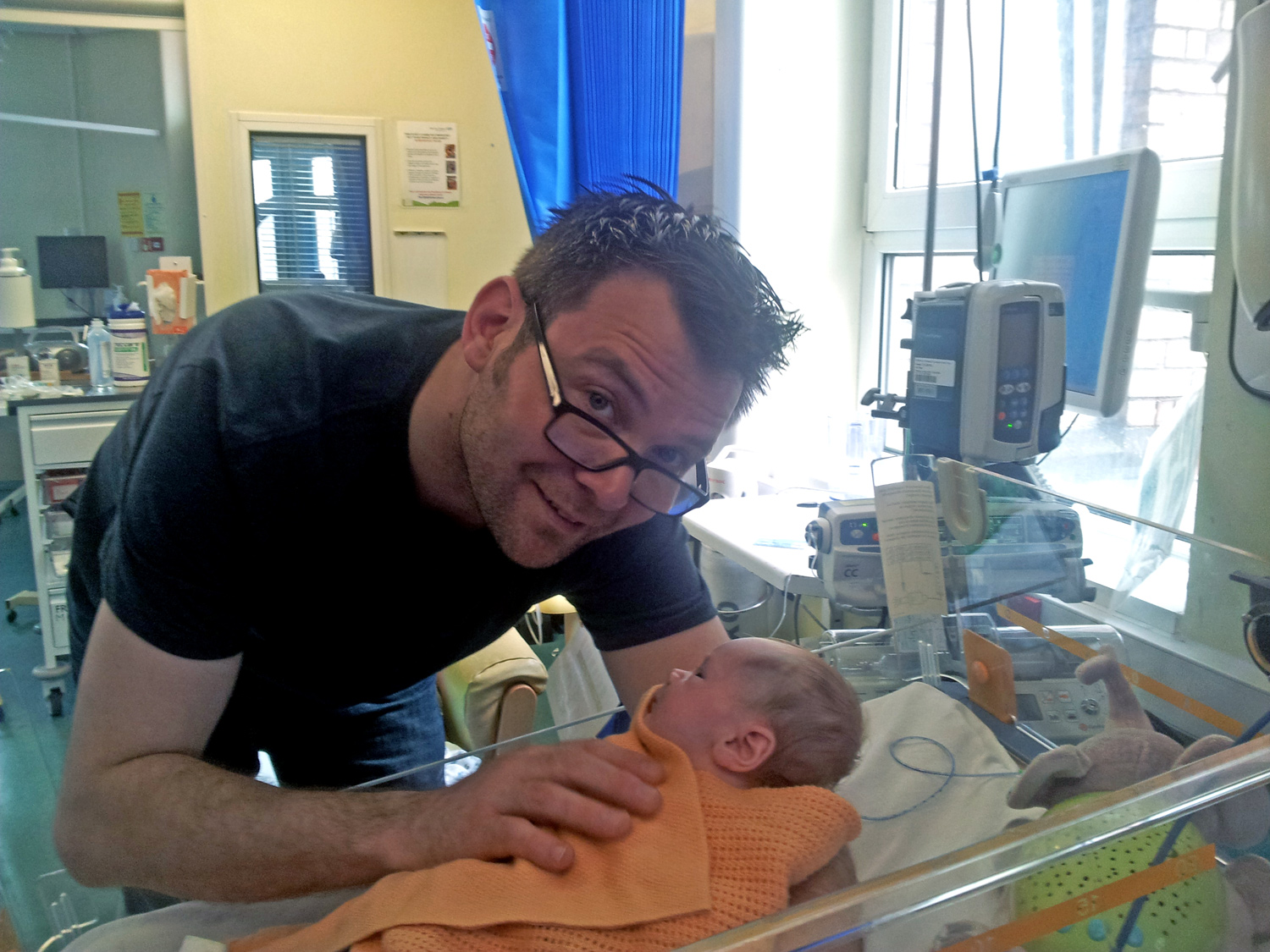
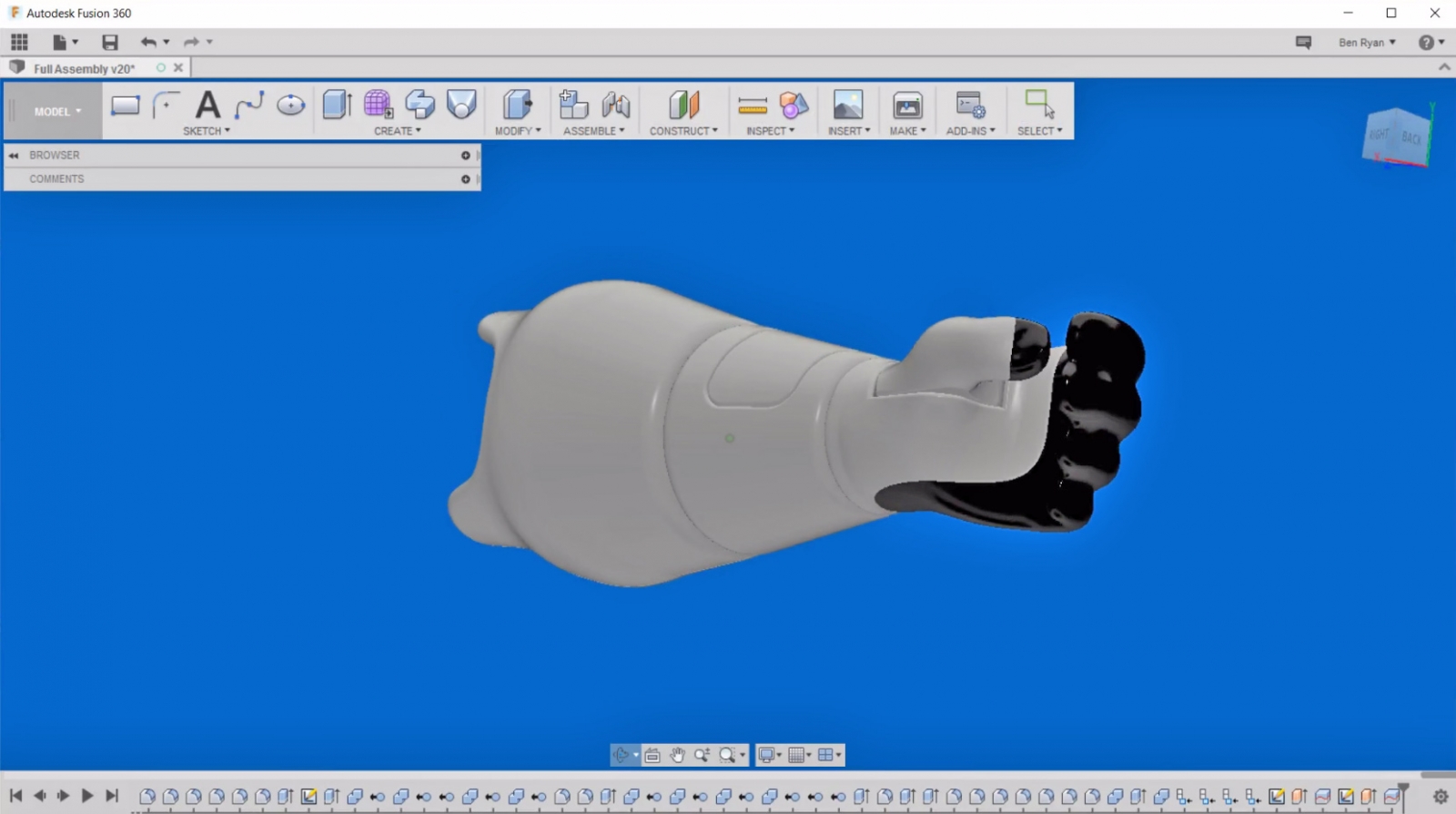
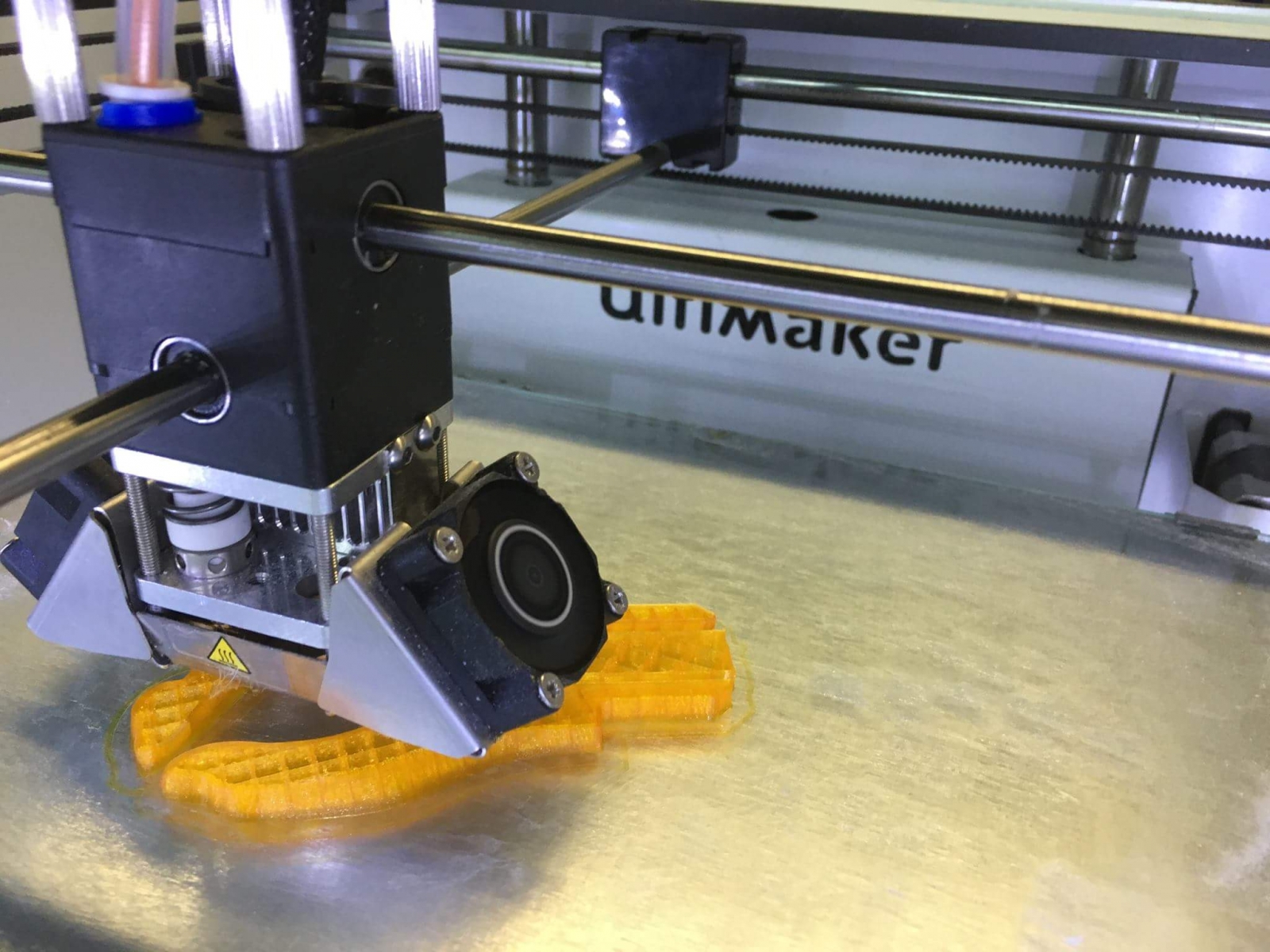
The hydraulic arm prosthetic was made entirely on a Stratasys Connex 3 printer using a rubber-like polymer invented by Stratasys called Tango Black Plus. The design of the device was developed by Ryan using Fusion 360 3D modelling software from Autodesk, who provided training on the software and are helping him to develop the first prototypes and other new features.
His startup Ambionics was also selected in November by Life Sciences Wales as one of six startups who will receive dedicated business advice from successful entrepreneurs. He also has a medical advisory board featuring numerous NHS and academic paediatricians from various academic institutions in the UK, helping him with the project.
Ryan is now looking to take his prototype hydraulic arms (for infants and eventually older children) to clinical trial in both the UK and the US, and to that end he has launched a crowdfunding campaign on Indiegogo. He is seeking £150,000 in total for prototyping, CE certification and FDA approval, as well as patenting costs.
"The NHS see fit to have two arms a year, we're going to go for three arms [as the child grows]. We can create this with a 76% cost saving and 90% faster, so you will receive the 3D printed prosthetic arm in five days instead of six to 10 weeks on the NHS," said Ryan.
"I want to make this affordable for low income families. There's very few man hours needed as you don't have to construct any materials, it's totally 3D printed and if anything happens to the prosthetic, we have the digital file and you can get a new one printed in five days."
© Copyright IBTimes 2025. All rights reserved.






















